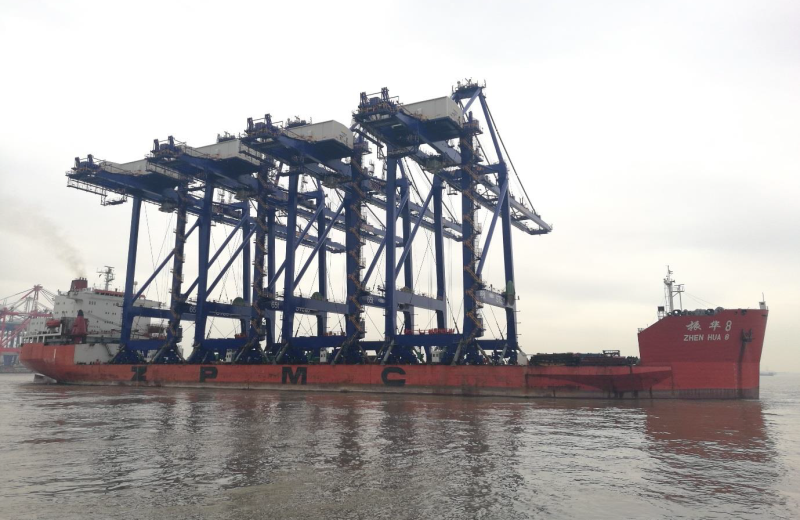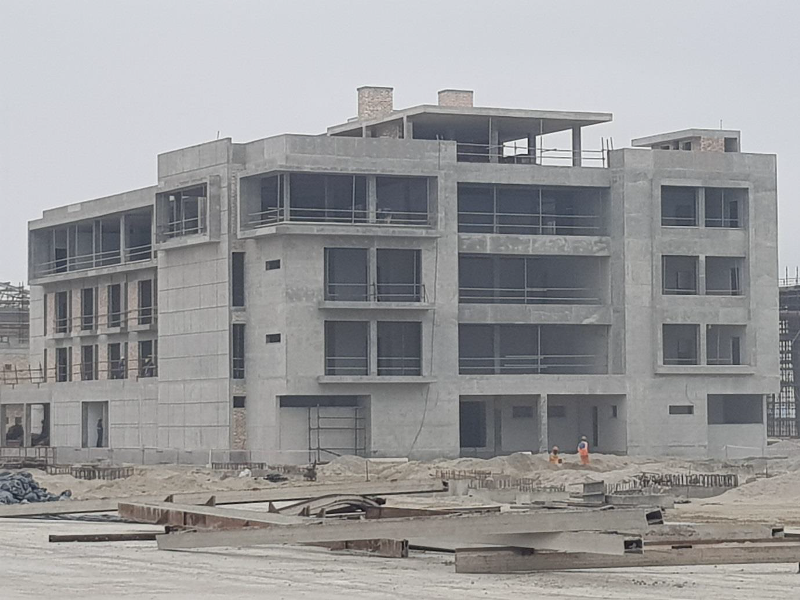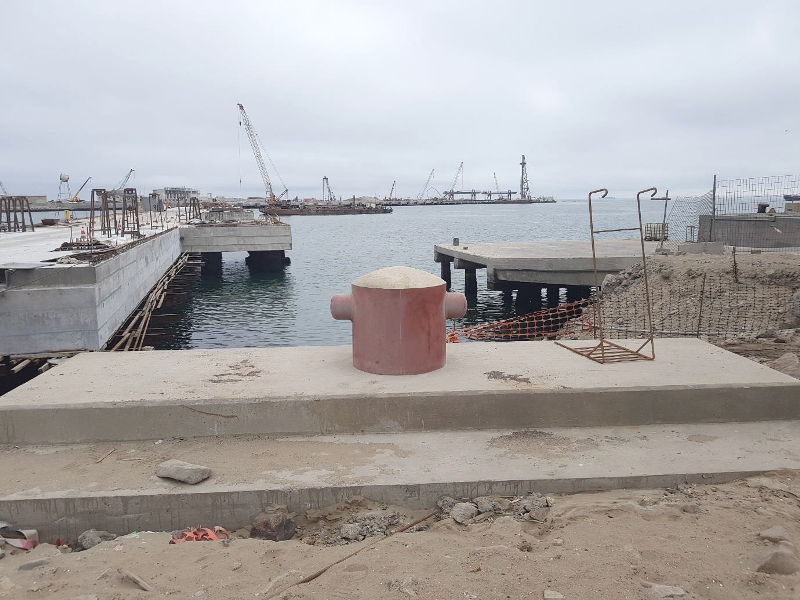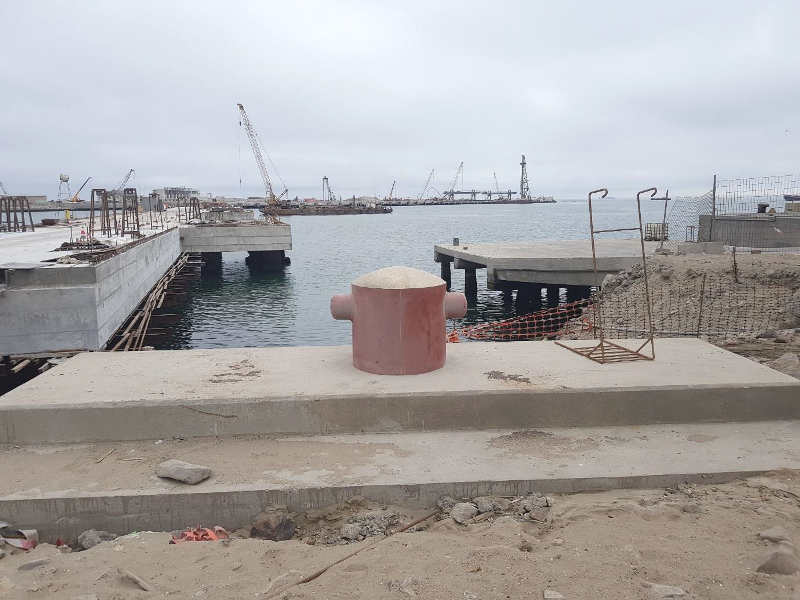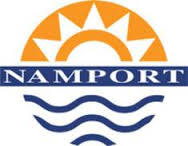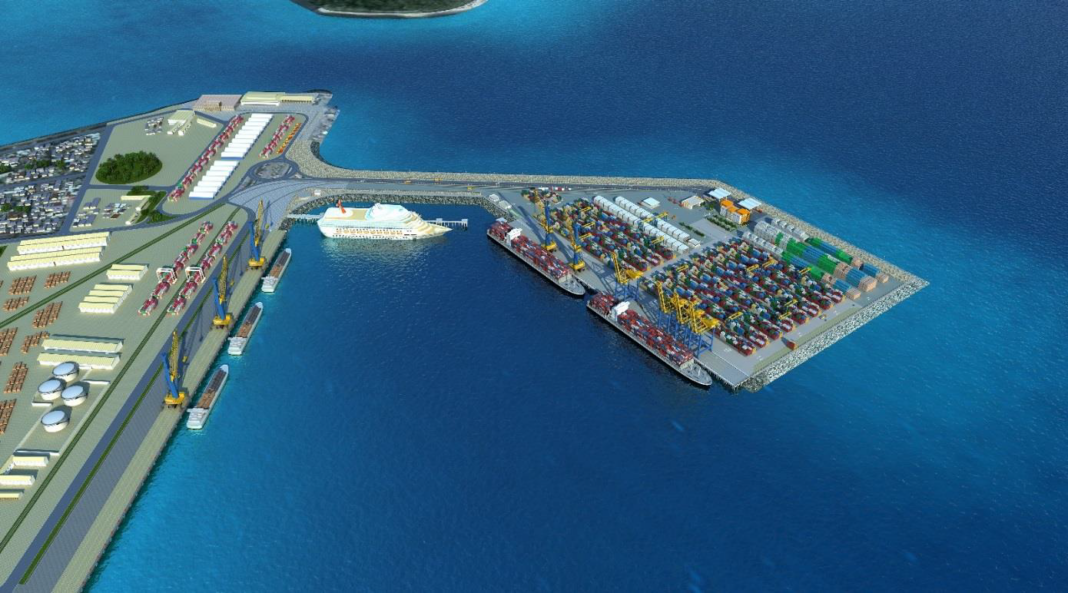Summary
- Project Status Report: Port of Walvis Bay New Container Terminal on Reclaimed Land
- Project Proponent: Namibian Ports Authority
- Financier: African Development Bank
- Project Budget: NAD4.2-billion
Brief project description
The project consists of the dredging and reclamation of 40 hectares of land offshore in the Port of Walvis Bay (the Port) in the South West corner of the Port on which a modern container terminal will be built. This new container terminal will be linked to the existing port land by a 106 m wide solid access causeway also to be reclaimed. All material to be used for land reclamation consists of sandy material which is sourced from the area to be dredged, which is immediately adjacent to the new reclamation. These newly dredged areas will form the berth pockets and turning basin of the new container terminal.
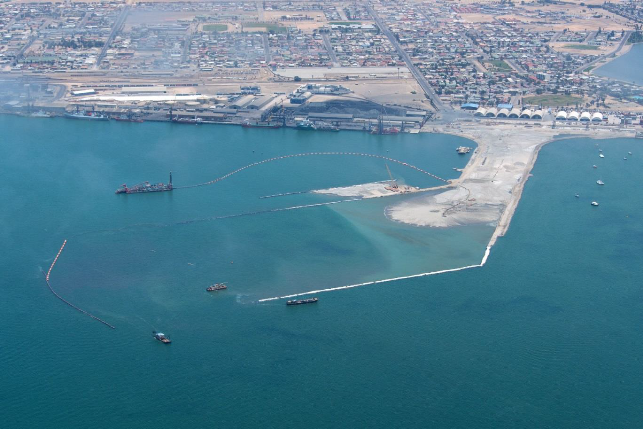
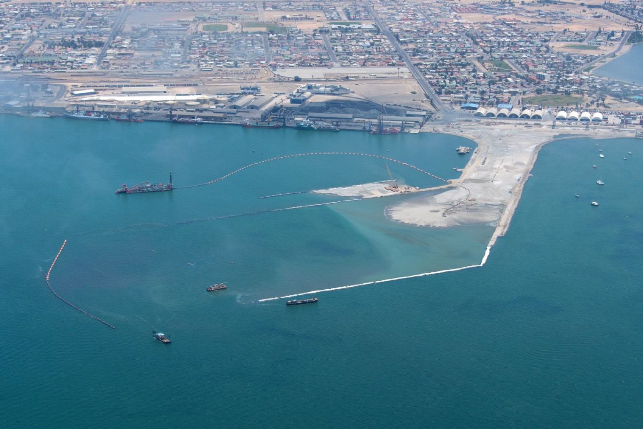
General Features
- 600 m of new quay wall (berth length) will be created (existing port has 1900 m of berth length). This new quay wall will be of the “deck-on-piles” type of quay wall, all reinforced concrete with piles of 1.4 m diameter thickness and with pile founding depths of up to 50 m below chart datum (about 51 m below mean sea level).
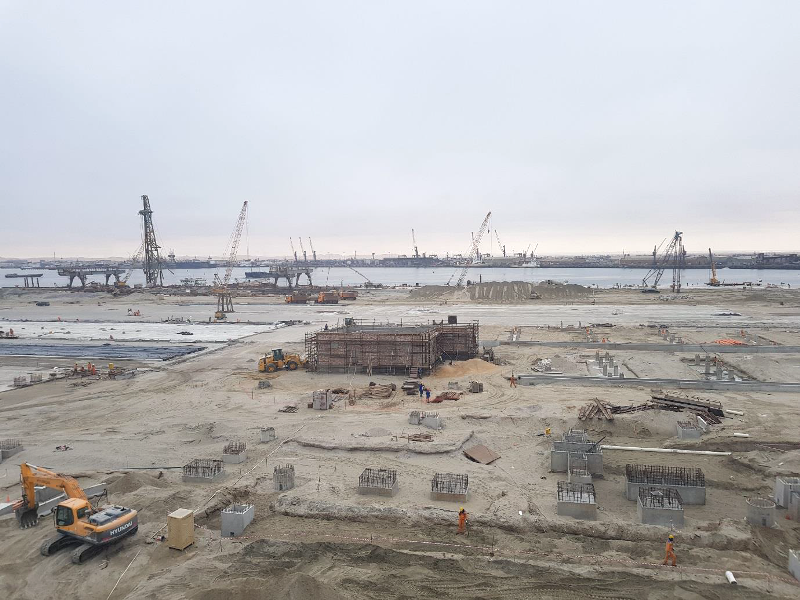
- The quay wall design depth is 16.0 m below chart datum.
- The quay wall is designed and built to accommodate some of the heaviest mobile cranes as well as ship-to-shore quay cranes.
- 4 x Super-Post-Panamax Ship to Shore Quay cranes will be installed on the quay wall.
- 4 x LHM500 mobile container cranes will also operate on the quay wall.
- 12 x Rubber Tyred Gantry (RTG) cranes and container trucks will move the containers around in the terminal.
- The new container terminal will have two large berths for accommodating two container vessels at once.
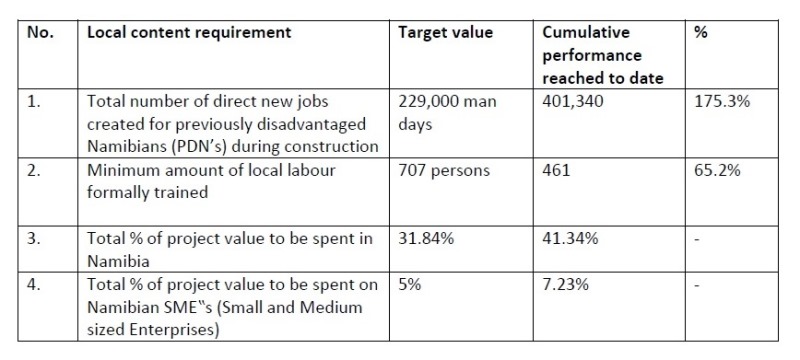
- The throughput capacity of the new container terminal will be 750,000 TEU’s (twenty foot equivalent units/containers) per annum.
- The new terminal will be connected to the existing port’s road network, rail network, utilities networks well as communication systems.
- A new administration building, access gate, substations and mechanical workshop will also be built.
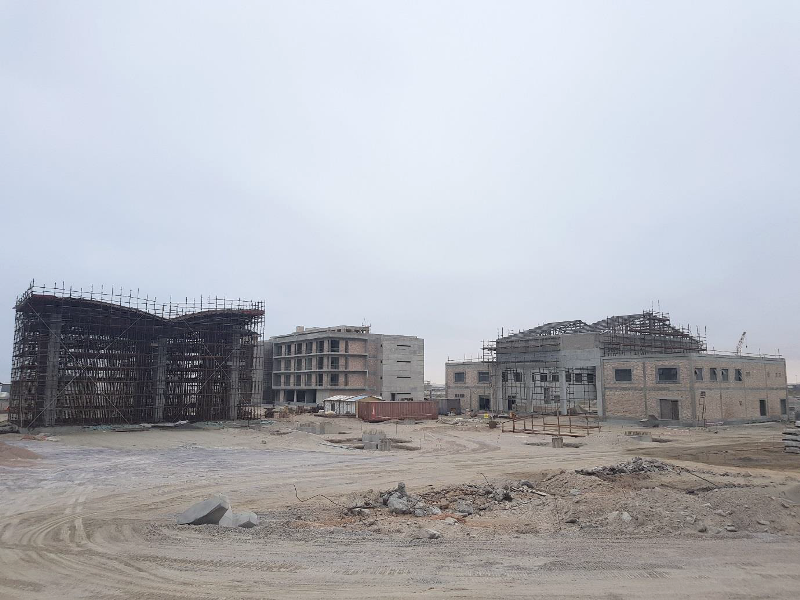
- Finally, this project also includes the construction of a jetty which can will accommodate Namport small craft on the one side and up to 8 000 dwt passenger liners on the other side. This will be the first time that a dedicated passenger liner berth is built in the Port of Walvis Bay.
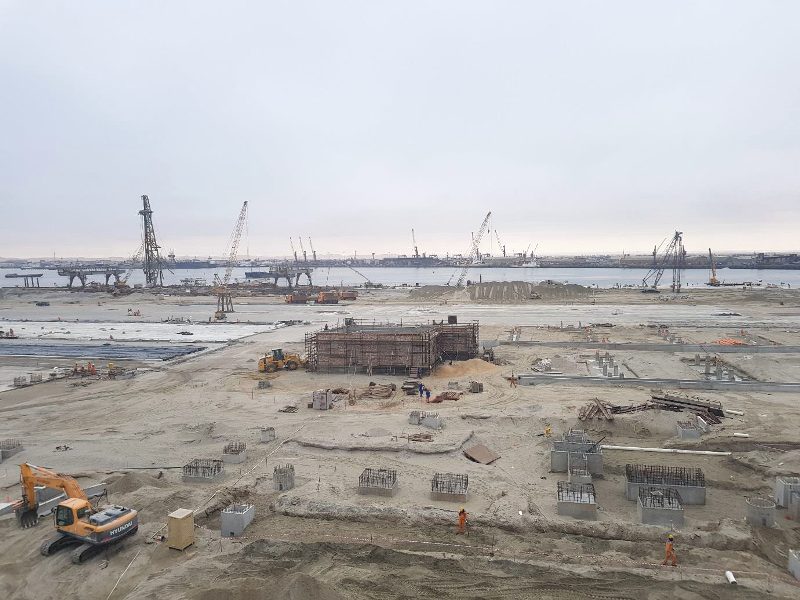
- The new container terminal will have a minimum throughput capacity of 750,000 TEU’s per annum, whereas the existing container terminal’s throughput capacity is 350,000 TEU’s per annum.
- Whilst more than doubling the port’s throughput capacity, this project will also increase the ports attractiveness to shipping lines due to increased productivity with faster ship turnaround times.
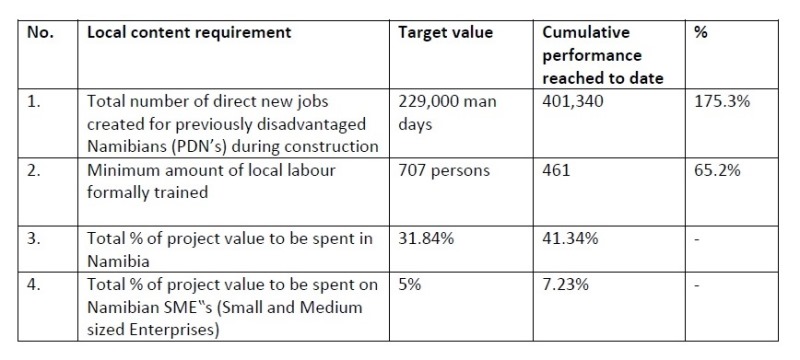
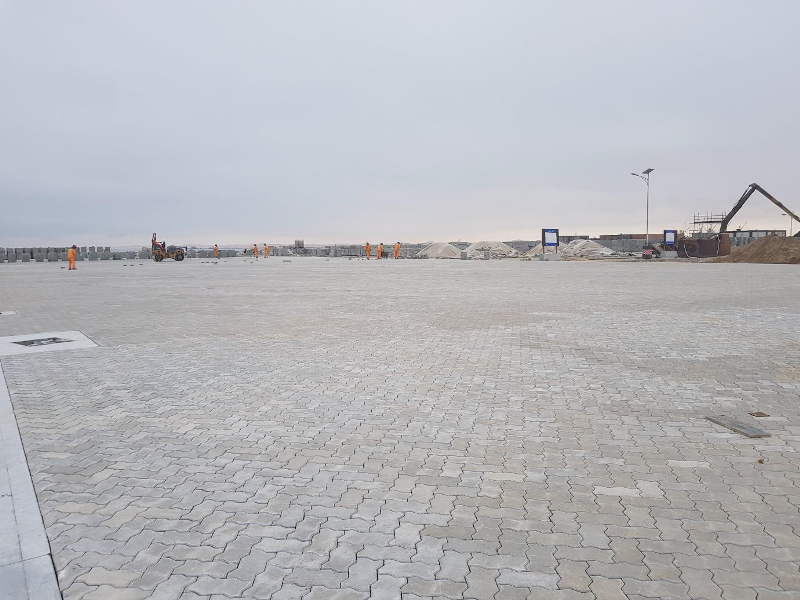
Main EPC Design and Construction contract
- Contractor: China Harbour Engineering Company limited (CHEC)
- Contract amount: NAD 3.44 billion
- Contract award date: 8 November 2013
- Commencement Date: 19 May 2014
Progress to date
Overall progress on the EPC contract as at 31 January 2018 is 76%. The contract is on schedule for completion of most of the works at the end of 2018, with minor works to be completed early 2019.
The following picture shows the progress made on major components of the project.
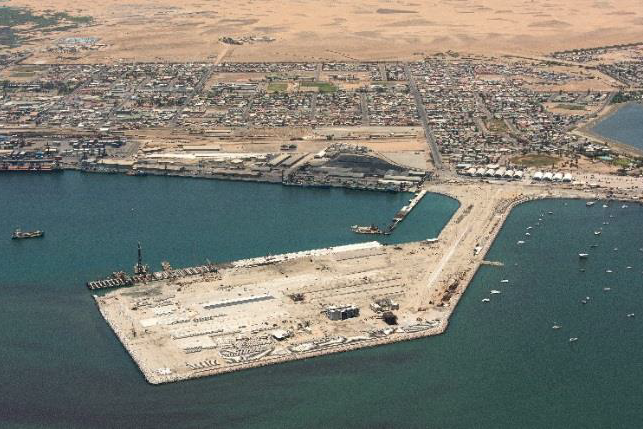
One of the major components of the project is the commissioning of 4 new Ship to Shore Container Cranes (STS’s). This will be the first time that these cranes will be deployed in the Port of Walvis Bay. Namport has to date made use of mobile cranes to load and offload containers from vessels. Most modern ports however, make use of Ship to Shore Quay cranes. These cranes are far more productive then mobile cranes and as such ship turnaround times are much faster.
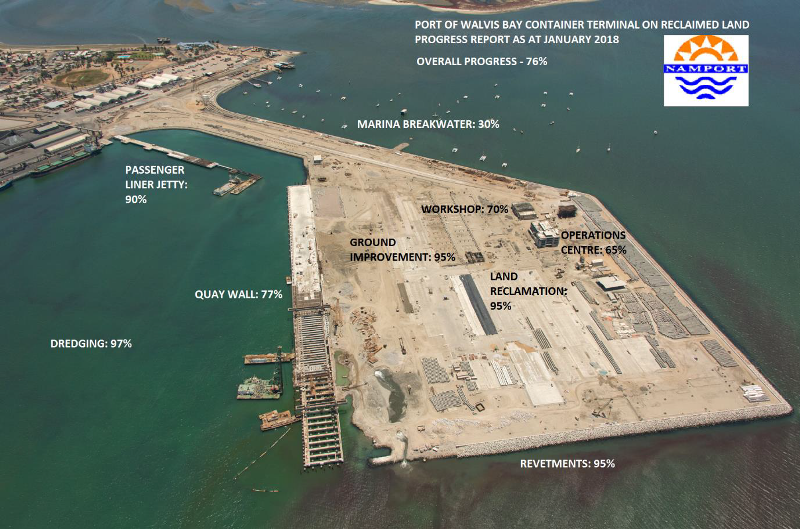
The 4 STS cranes departed Shanghai, China on 30 December 2017. The current expected time of arrival (ETA) in Walvis Bay is on 10 February 2018, but this date is preliminary. The supply and delivery of these 4 x STS cranes forms part of the EPC contract with China Harbour Engineering Company (CHEC), which was signed on 8 November 2013.
The cranes were manufactured by ZPMC, the largest port equipment manufacturing company in the world. Manufacturing of the cranes started on 10 October 2015. The cranes will be offloaded from the ship as soon as they arrive. Offloading will take a few weeks. After offloading is completed, testing, commissioning and training will then commence and be completed towards the end of 2018.
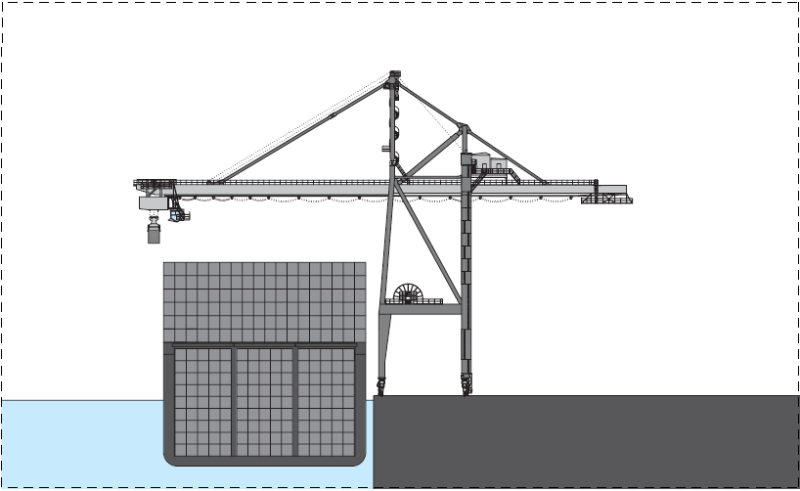
Some interesting facts about these cranes:
- Height of crane with boom in operational position: 70 m
- Boom outreach measured from seaside leg: 69 m
- On a clear day these cranes will be visible from Swakopmund
- Total weight of crane: 1 290 metric tons
- The cranes run on two crane rails which are 100 feet apart and they run for the full 600 m length of the quay wall.
- The cranes are powered by electricity from the national grid.
- Each crane is fed by a trailing electricity cable which conveys electricity to the cranes at 11 000 Volts.
- At peak load one crane draws 2.5 MVA.
- Whereas Namport’s current mobile cranes can load/unload approximately 15 containers per hour on average, these STS cranes can do at least double that, i.e. 30 to 40 containers per hour. Thus the ship turnaround times are expected to be much faster, which will in turn allow more vessels to be serviced. Fast ship turnaround times is what makes container terminals attractive for shipping lines.
- One of these cranes costs approximately NAD-110 million.
Local content performance
